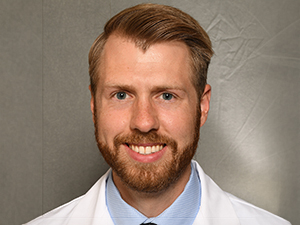
by Griffin Selch, M.D. (PGY-2)
Medicine is about progress. As a profession and an industry, the field of medicine prioritizes continuous improvement. We as physicians dedicate an enormous amount of time and energy to learning, training, and eventually practicing medicine. Science is always marching forward, and with it, our understanding of—and ability to treat—disease changes. We are also deeply immersed in health systems; a hodgepodge of protocols, procedures, standards, and expectations—things that you do not learn about in medical school and then are thrust into with the start of residency, and even more so with the start of your first “real” medical job.
These complex interactions between physicians, the hospital, clinics, pharmacies, nursing staff, techs, the EHR, and insurance companies have as much impact on patient care as our level of medical knowledge or the most recently updated guidelines.
As I started intern year and began practicing medicine, with an emphasis on the word practice, these systems were not my focus. I did not know how to order Tylenol. Improving the processes of a massive, and in many ways dysfunctional, health system is a big lift. However, I quickly noticed that when bad things happen to our patients, there are often systems-based problems at play. I do not insinuate that individuals don’t make mistakes—we do, and we learn from them, we improve, and we eventually become experts in our field. But I realized that improving our health systems (through which we deliver patient care) is necessary to optimize our patients’ outcomes. It is within our circle of control. Quality Improvement (QI) is tangible, measurable, and an essential part of our jobs.
QI is often a forgotten pillar of medical excellence. As residents, we experience events that lead to harm (or near misses) and report them through systems such as “Trend Trackers.” Anyone involved in patient care, not just physicians, can report events through this application. And then… it seems like nothing happens. Trends are tracked and disappear into the ether. You move to the next rotation, and residency marches on. It was not until I spent time serving on UAB’s Patient Safety Committee (PSC) that I saw where this information goes, and what good it can do. An impressive amount of energy goes into improving the care delivered at this institution, and residents can be part of it.
My PGY-2 elective was focused on QI and patient safety at UAB. While serving on the PSC for a month, I participated in multidisciplinary meetings about multiple ongoing projects, such as improving rates of central line-associated bloodstream infections and catheter-associated urinary tract infections. We received data and reports on Medical Emergency Team calls, patient flow, patient and family grievances, and mortality rates across various units. But what had the largest impact on me was being a part of the root cause analysis (RCA) process. As providers across the hospital complete Trend Trackers, the patient safety committee reviews them all, and many result in an RCA. The purpose of an RCA is to identify issues within health systems and propose solutions to them. In what was one of the most rewarding experiences of residency so far, I was able to use my experience from the wards to assist the QI team, making UAB a safer place one RCA at a time.
Medicine is about progress and constantly improving our care. To deliver excellent care, our systems also need to improve. We are great at recognizing lapses, identifying dysfunction, and seeing the need for change. However, as QI becomes a larger part of medicine, I hope that more physicians realize how rewarding this work can be and take it upon themselves to bring about change. Residents are on the front lines of healthcare delivery at UAB; we experience safety events firsthand and often have important insight regarding systemic improvements. As such, the resident perspective is an essential component of the QI process. Physicians have knowledge, skills, and invaluable experience that can be brought to the QI table to make healthcare better and our patients safer.